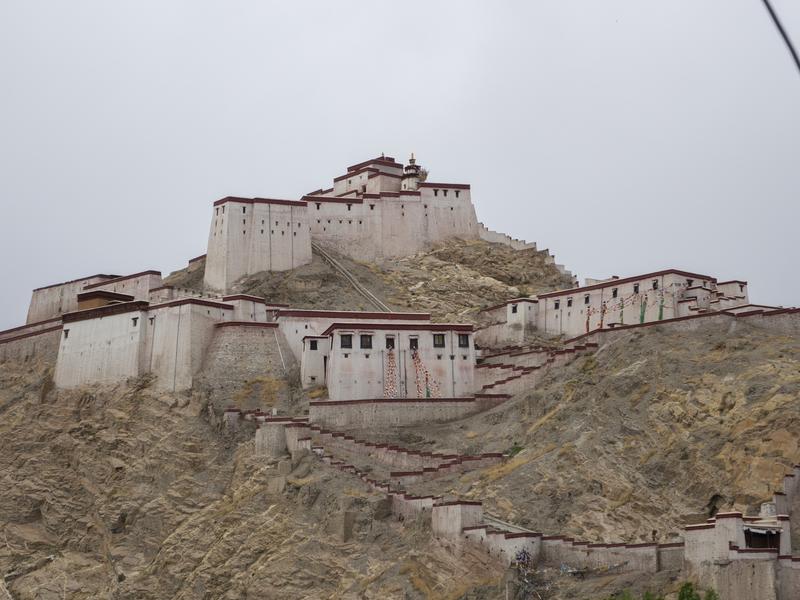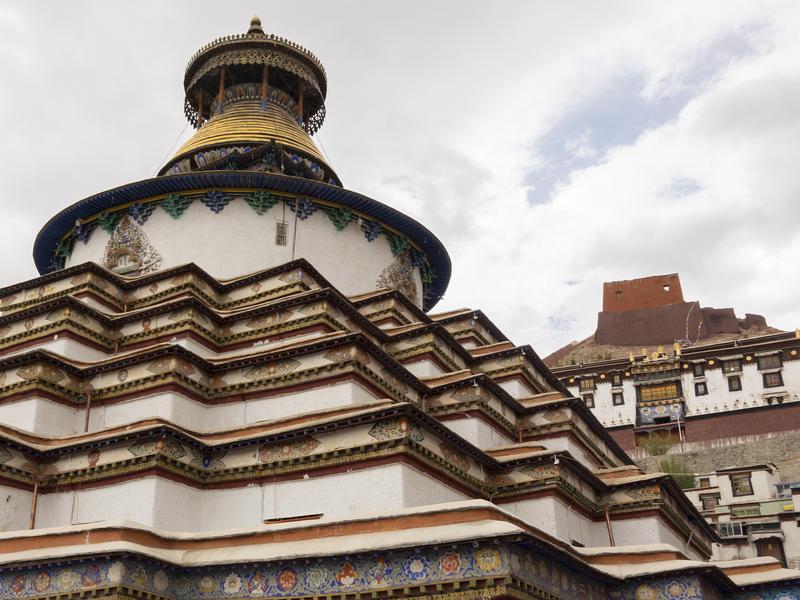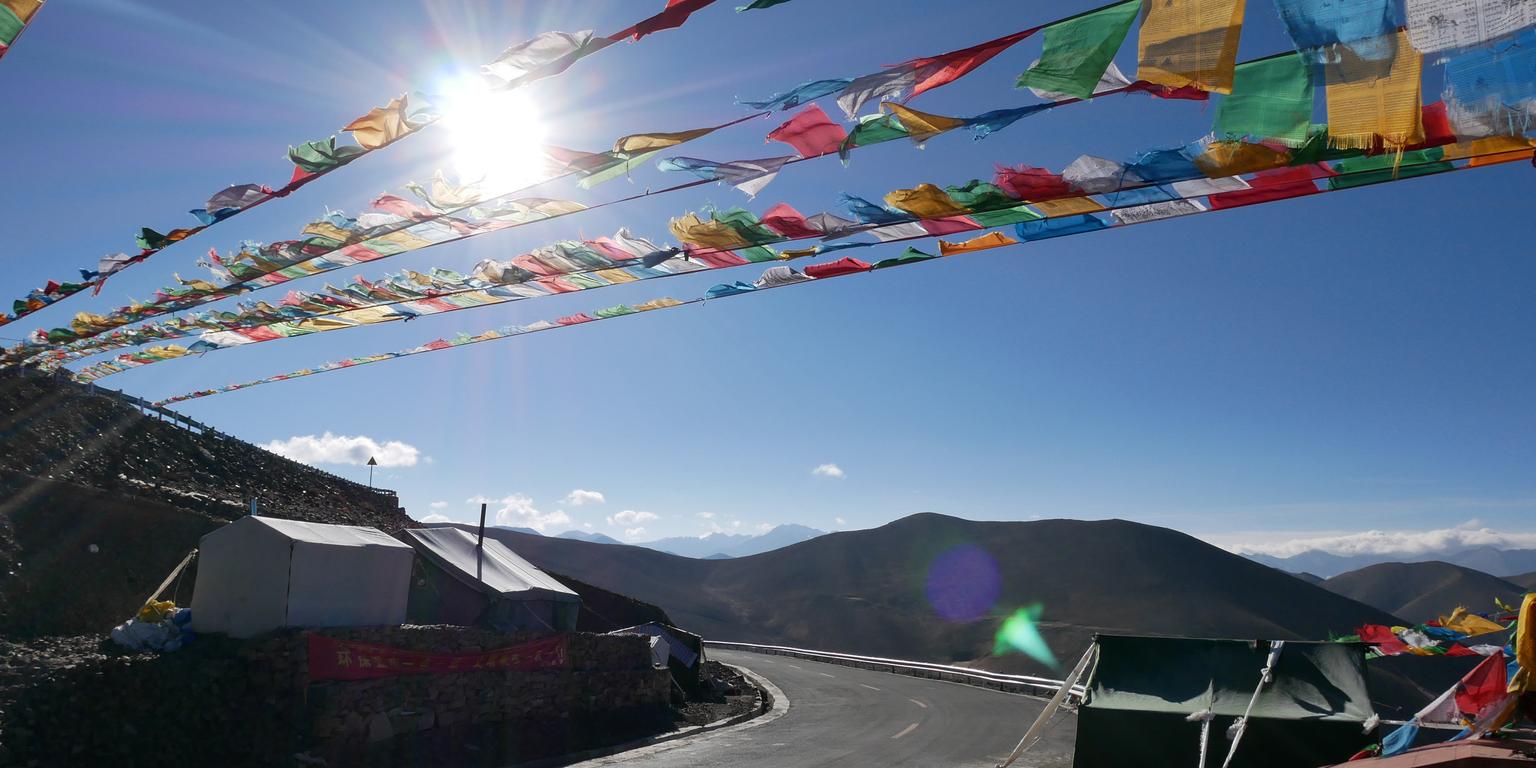Gyantse
Gyantse is often - unfairly, we think - regarded as little more than a stopover destination between Lhasa and Shigatse. This unassuming, laidback mountain town, with a pleasantly traditional Tibetan ambience, is home to the Palcho Monastery and its towering Kumbum (Pelkor Chode): one of the most spectacular architectural achievements on the Tibetan Plateau. In contrast to many other Tibetan towns, Gyantse has largely escaped the worst excesses of modern development, and its dusty streets, particularly in the old town around the monastery complex, are a joy to explore at a relaxed pace.
Three things to do in Gyantse
Obviously there's a lot more, this is just to get you started...
Gyantse Dzong
The town’s beauty can best be appreciated from above, and the foreboding Gyantse Dzong offers several excellent viewpoints from its hilltop position. Originally built in the 9th century, and now restored, the Gyantse Dzong is a well-preserved fortress referred to locally as ‘The Hero City’ for the spirited resistance that the inhabitants put up against British troops in 1904. That vivid story of patriotism is explored at an interesting on-site museum. Legend has it that the Lord of Gyantse sent a craftsman to Lhasa to study the Potala Palace with the aim of replicating the design. The architect, apparently, made his notes on a radish, which then shrunk, which is why the Dzong looks like a miniature version of the Potala Palace!

Palcho Monastery
Small whitewashed houses cluster around the Palcho Monastery’s vast complex, surrounded by a protective wall almost two miles long, while in the background, the mountainous, lunar-like plateau stretches out seemingly forever. Unusually, three different schools of Tibetan Buddhism (Gelugpa, Sagyapa and Kadampa) coexist under one roof here, while the architecture is a fascinating mix of Tibetan, Han Chinese and Nepali craftsmanship. The monastery’s ample treasures include over 1,000 sets of ancient Tibetan sutras, intricate sculptures and carvings, and a hugely influential set of murals depicting historic figures and stories from Buddhism. Wandering around, you may see the occasional bullet hole in the masonry, too - a sobering reminder of the British assault in 1904.

Cultural contrasts: traditional craft and Victorian excess
Gyantse is renowned for the quality of its traditional woollen rugs, which have been woven by hand here for over 900 years. Featuring bold, colourful designs, the rugs are still produced today and can be seen brightening many Tibetan homes. In sharp aesthetic contrast to these exquisite homespun artworks is the nearby Pala Manor estate; a collection of around 60 houses that showcases the extravagance of wealthy 19th century landowners. The main house has a reception room which was reserved purely for playing mahjong on a set carved from ivory! Other artifacts include an ox horn used for holding barley wine, delicate porcelain bowls for drinking ghee, and antique cases of whisky brought over from Britain. Two very different aspects of Gyantse’s heritage.


